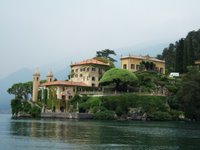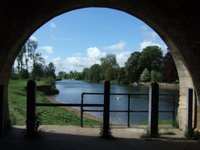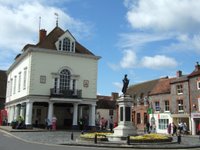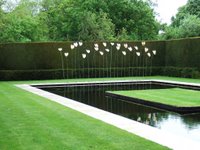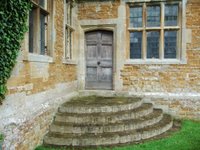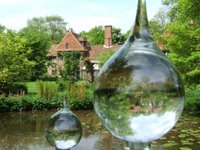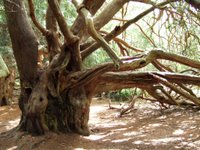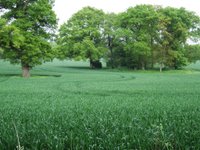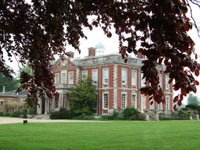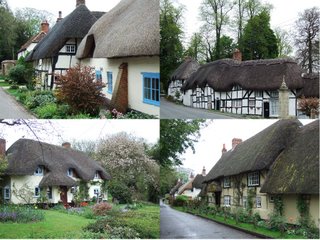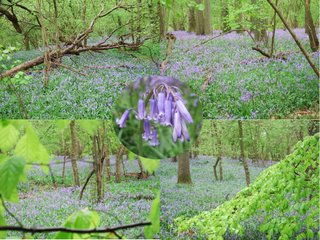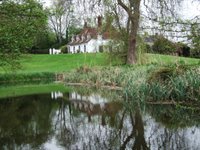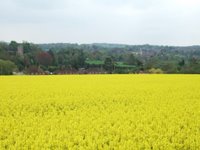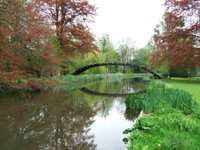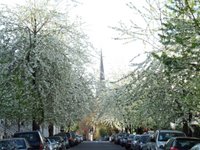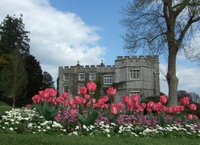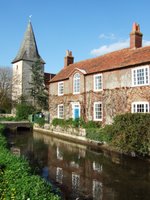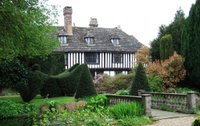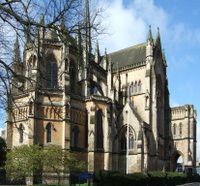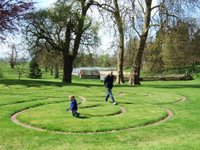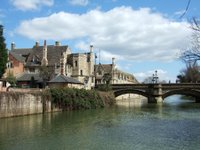
Rutland Water is the largest man made lake in Western Europe, and a very pleasant place for a sunny spring day. We spent a relaxing afternoon on Good Friday by the lake after a walk from Stamford to Ryall.
Stamford is a very beautiful stone town, used for all the town & village scenes in the latest production of Pride & Prejudice. The town escaped the industrial revolution because the family at the nearby great house of Burghley House refused to let the rail-way come & spoil 'their' town. This was probably an economical blow to the tradesmen of the time, but a bonus for the current tradesmen.
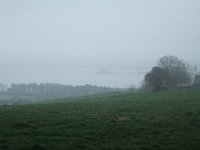
Easter Saturday started very misty & we walked from the picturesque town of Lyddington past another reservoir, used by the Lancaster bombers in WWII to practice night time bombing. We then visited the Bede House in Lyddington, originally a Bishop's Palace, stayed in by Henry 8th, later an Almshouse. A tour of the accommodation made us less than enthusiastic to have been a resident!
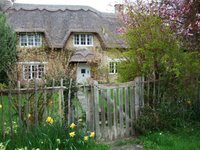
We then did a very interesting guided walking tour of Stamford, followed by a circular walk around Exton described as one of the loveliest villages in Rutland. It is certainly rates as one of the best we have visited.
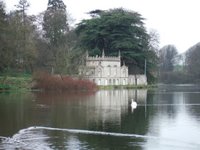
The walk went from the estate village to a folly known as Fort Henry; built in 1788 by William Legg for Henry, Earl of Gainsborough the owner of Exton Park.
Sunday was lovely and sunny again. We did a morning walk around Belton-in-Rutland, and spent the afternoon visiting two country homes. The first, Deene Park, has a beautiful position, with gracious rooms opening onto a terrace leading to formal gardens with a lake beyond. It is still a beautiful home, obviously much loved by the current family. The second, Southwick Hall, was
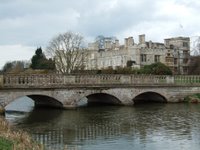
two centuries older and consequently less comfortable, but obviously has had an interesting past.
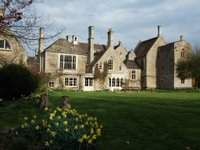
We finished the day with a walk around Oundle, smaller than Stamford, but equally attractive. From there, we did a short walk to Ashton, a delightful village of thatched stone houses, rebuilt by the Rothschild family just over a hundred years ago. We had a lovely dinner in their equally beautiful thatched pub.

Easter Monday started with brilliant sunshine. We started the day visiting Hallaton, which has a fascinating Easter Monday tradition. First they share a hare pie & then compete with a near-by village in a 'bottle-kicking' competition. The 'bottles' are actually small casks of beer. We were too early for the action, so left to visit Grimsthorpe Castle. On the way we passed through Oakham and visited the castle. All that is left is the Great Hall, built 1190, the earliest surviving aisled stone hall in the country.
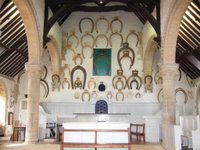
They have a tradition that visiting peers of the realm and royalty must present the Lord of the Manor with a horseshoe. The oldest to survive was presented by Edward IV in 1470 & the most recent by Princess Alexandra in 2005. The “horseshoes” are horseshoes in shape only, rather large and grandiose, depending on the donor.
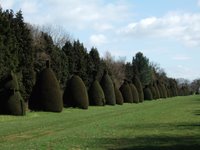
The next interesting place we stumbled over was a topiary by
Clipsham, an amazing driveway to Clipsham Hall, now looked after by the Forestry Commission.
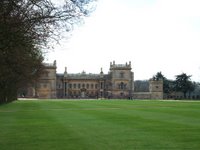
Grimsthorpe Castle, when we reached it, was most impressive and interesting. The family has the hereditary office of Lord Great Chamberlain. This means they have a collection of thrones from the House of Lords, used by previous monarchs.
The sun had been replaced by thunder storms by the time we left Grimsthorpe, and by the time we reached our final destination of Rockingham Castle, there was a terrific hail storm.
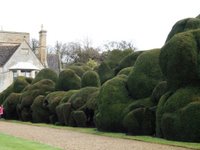
Rockingham Castle is 900 years old, and would have withstood many such storms and much worse over the centuries. For half of that period it was a royal fortress and the remaining 450 years a family home. An excellent video captured the sense of history very cleverly. The castle gave us a feeling of the past, but we enjoyed the grounds and the amazing view over the countryside more.
Bank holiday traffic never ceases to amaze us, and we returned to London in less than 2 hours.
 Milan is a good base for visiting the picturesque nearby lakes. The highlights of Milan could be fitted into one very full day. Our favorourites were the cathedral rooftop, the Monument Cemetery,
Milan is a good base for visiting the picturesque nearby lakes. The highlights of Milan could be fitted into one very full day. Our favorourites were the cathedral rooftop, the Monument Cemetery, 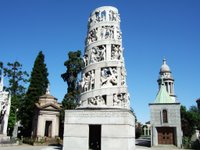 Last Supper fresco by Leonardo da Vinci and of course the Galleria Vittrio Emanuee shopping arcade.
Last Supper fresco by Leonardo da Vinci and of course the Galleria Vittrio Emanuee shopping arcade.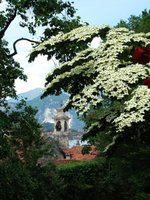 Lake Maggiore, in contrast could easily be a relaxing destination for several days. We enjoyed exploring the islands. Isola Pescatori was a fishing village, but now revolves around tourists. But sangria on a sunny balcony overlooking the lake is a great way to experience a fishing village!
Lake Maggiore, in contrast could easily be a relaxing destination for several days. We enjoyed exploring the islands. Isola Pescatori was a fishing village, but now revolves around tourists. But sangria on a sunny balcony overlooking the lake is a great way to experience a fishing village! 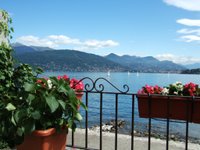
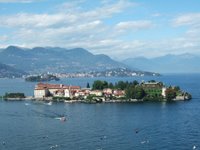 Isola Bella was a cluster of barren rocks, but after many man-hours is now a boat shaped island that the Count had built for his wife Isabella.
Isola Bella was a cluster of barren rocks, but after many man-hours is now a boat shaped island that the Count had built for his wife Isabella. 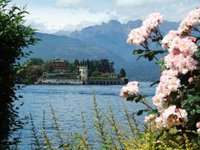 The palace (? holiday home) he built is stunning, as are the gardens.
The palace (? holiday home) he built is stunning, as are the gardens. 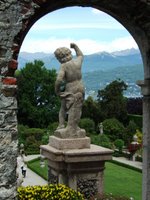
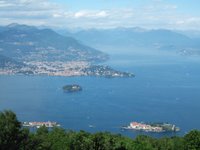
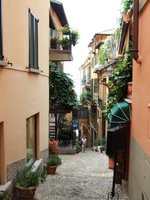 Monday was scheduled for Lake Como. Sadly the day was misty, but with no wind, the lake was like glass. We took the boat up the lake to the Villa Carlotta, then on to Bellagio, which is reported to be the prettiest village in Italy. Maybe an exaggeration, but it is a cute lakeside village with narrow streets of shops, and heaps of places to eat.
Monday was scheduled for Lake Como. Sadly the day was misty, but with no wind, the lake was like glass. We took the boat up the lake to the Villa Carlotta, then on to Bellagio, which is reported to be the prettiest village in Italy. Maybe an exaggeration, but it is a cute lakeside village with narrow streets of shops, and heaps of places to eat. 